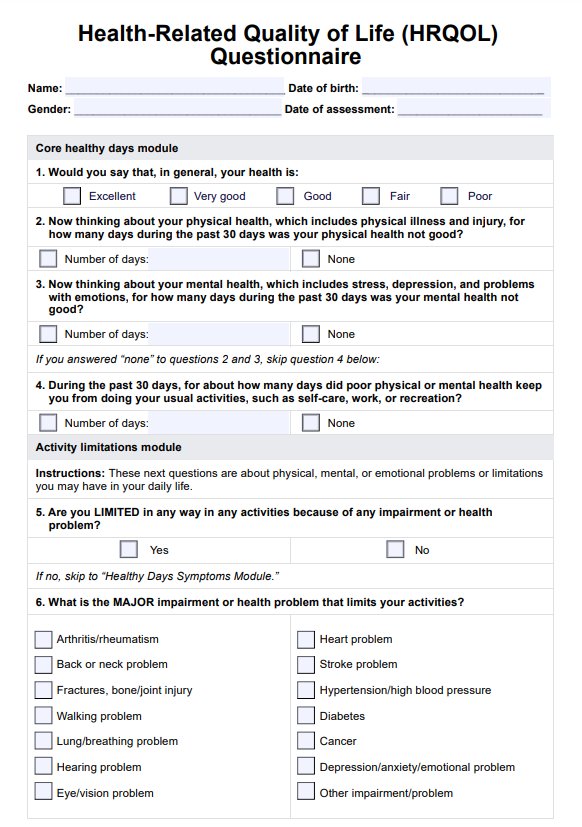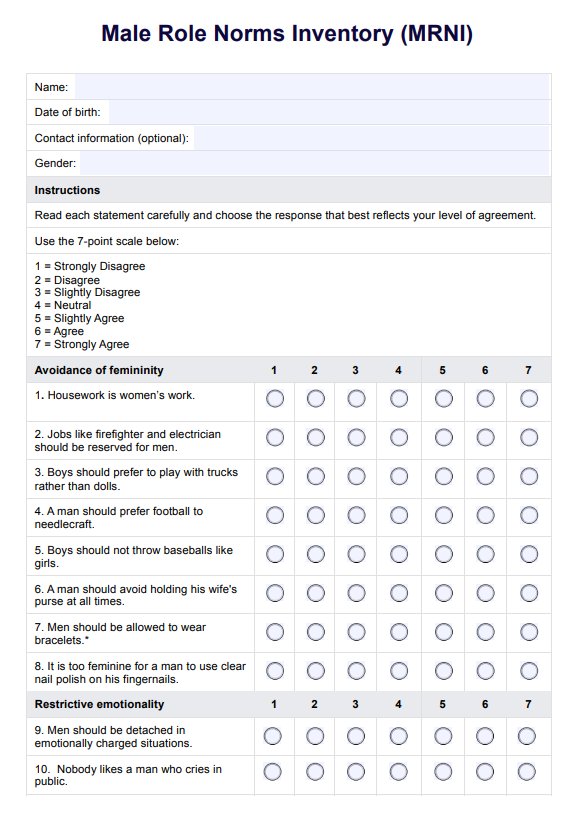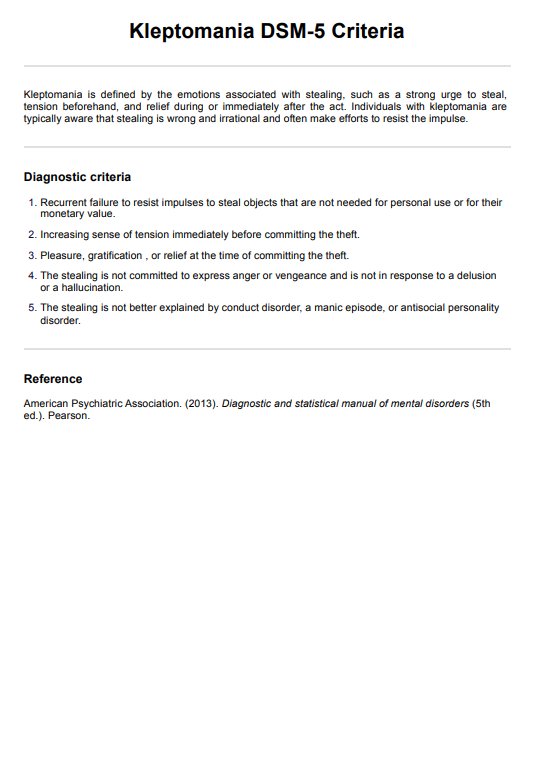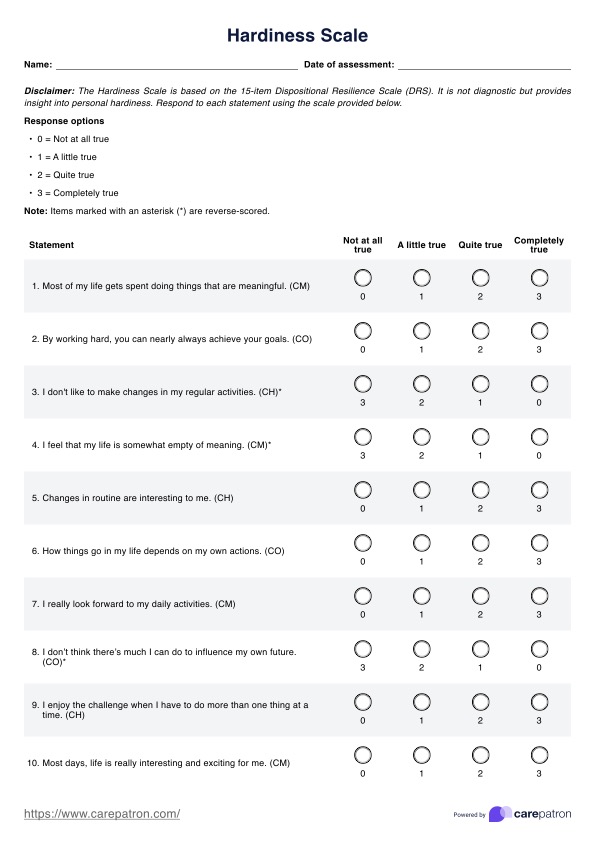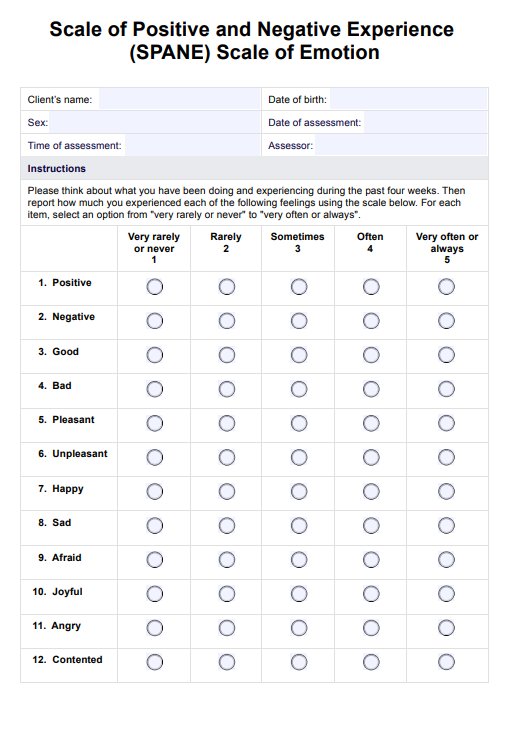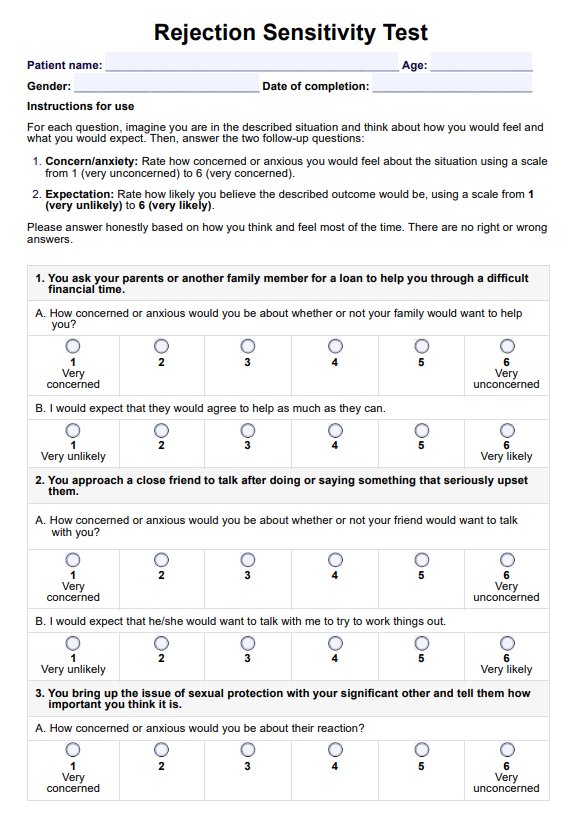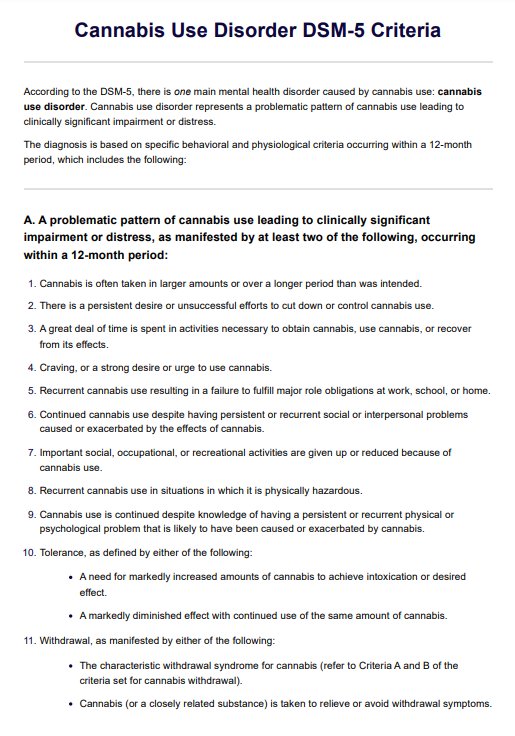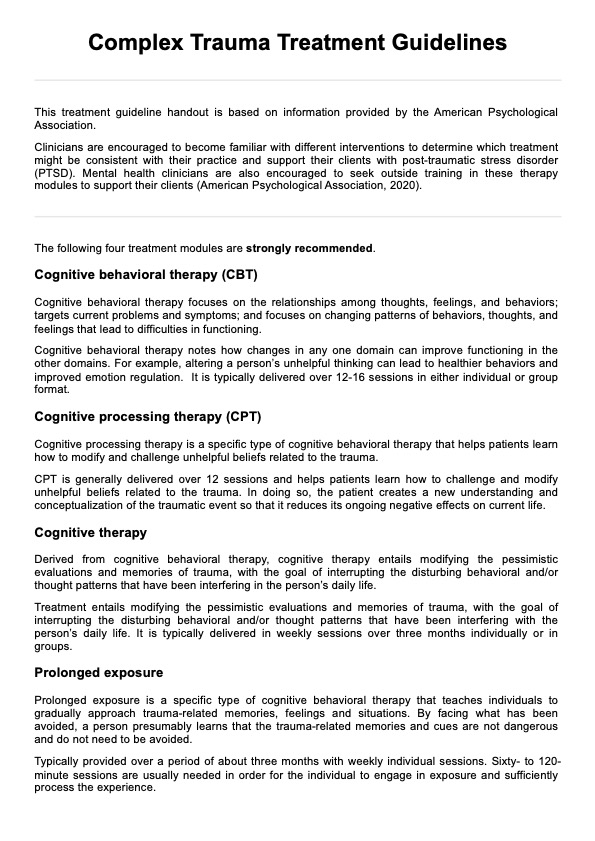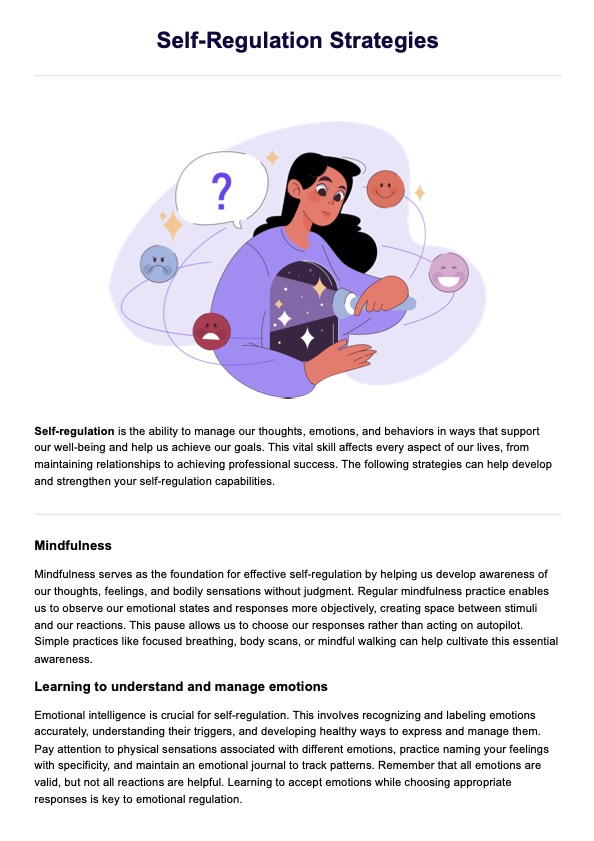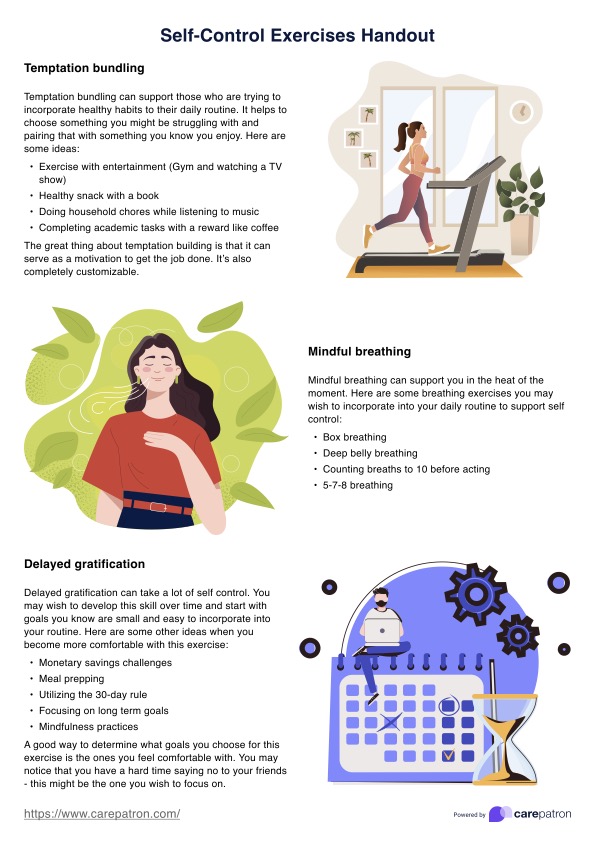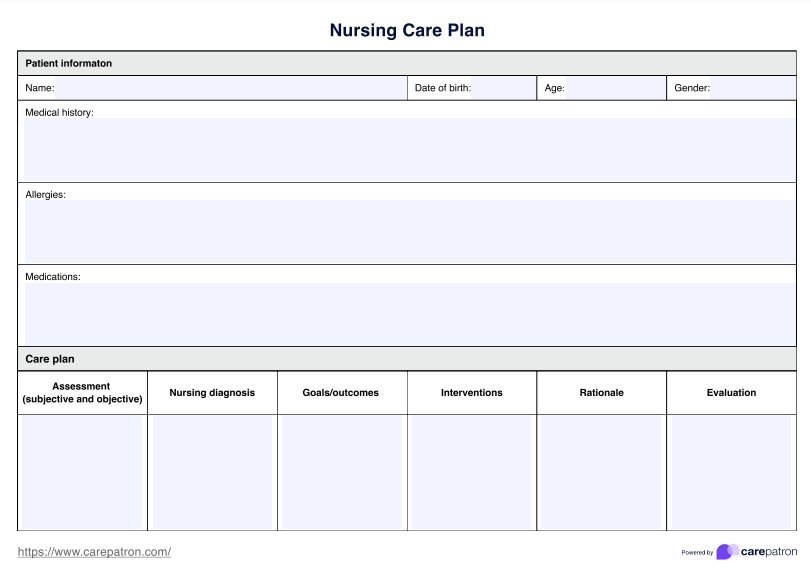Healthy vs. Unhealthy Boundaries Worksheets
Discover the Healthy vs. Unhealthy Boundaries Worksheet Template on Carepatron. Enhance your mental health, improve relationships & boost self-esteem.


What is a Healthy vs. Unhealthy Boundaries Worksheet?
A is a valuable resource to help individuals understand and establish effective personal boundaries in their relationships. It's an educational tool that differentiates between healthy and unhealthy boundaries, providing clear examples and guidance for each.
Healthy boundaries are essential for maintaining self-respect and promoting positive interactions with others. Conversely, unhealthy boundaries can lead to negative outcomes such as disrespect, manipulation, or abuse. This worksheet promotes awareness of these concepts, encouraging individuals to reflect on their boundaries and make necessary adjustments.
The worksheet typically includes various sections that address different aspects of boundary setting. These may include identifying personal rights, recognizing signs of boundary violations, and developing strategies for enforcing healthier boundaries.
Healthy Vs. Unhealthy Boundaries Worksheets can be used by anyone seeking to improve their interpersonal relationships, including those dealing with issues related to codependency, self-esteem, or emotional well-being. They are also used extensively by mental health professionals, such as therapists and counselors, as part of their therapeutic interventions.
Healthy vs. Unhealthy Boundaries Worksheets Template
Healthy vs. Unhealthy Boundaries Worksheets Example
How to use the Healthy vs. Unhealthy Boundaries Worksheet:
The Healthy vs. Unhealthy Boundaries Worksheet is invaluable for self-reflection and personal growth. The process of using this worksheet involves five key steps that promote a deeper understanding of one's boundaries, enabling individuals to foster healthier relationships and personal well-being. Let's delve into these steps:
Step 1: Grasp the Fundamental Concept
Understanding healthy and unhealthy boundaries is the initial step in utilizing the Healthy vs. Unhealthy Boundaries Worksheet. This crucial step lays the groundwork for the rest of the exercise. It involves learning about healthy boundaries – those that promote respect, autonomy, and positive interactions, versus unhealthy boundaries – those that can lead to manipulation, disrespect, or abuse. A clear comprehension of these concepts will serve as a guiding light throughout your journey.
Step 2: Pinpoint Your Current Boundaries
Once you've grasped the basic concept, it's time to turn the lens inward and identify your existing boundaries across different facets of your life. These could span personal relationships, work dynamics, and self-care practices. This reflective step encourages you to take stock of your current boundary settings, laying bare the areas that need attention.
Step 3: Scrutinize Your Boundaries
The third step requires a critical evaluation of your identified boundaries. Here, you'll assess whether your existing boundaries align more with the healthy or unhealthy category. The examples provided in the worksheet serve as benchmarks, guiding you toward an objective assessment.
Step 4: Strategize for Change
Upon identifying unhealthy boundaries, the next step is to devise strategies for altering them. This could encompass a range of tactics, including assertiveness training, implementing self-care regimes, or seeking professional assistance. Crafting a tailored plan for change paves the way for improved boundary setting.
Step 5: Execute and Review
The final step in using the Healthy vs. Unhealthy Boundaries Worksheet involves implementing your change strategies. Implementing your plan and regularly reviewing your progress is crucial for sustained improvement. Remember, change is a process, not an event, so be patient with yourself and adjust your strategies as needed.
Download our Printable Healthy vs. Unhealthy Boundaries Worksheet today to kickstart your journey towards healthier boundaries. This resource will guide you through each step, providing a structured framework for enhancing your boundaries and overall well-being.
When would you use this Form?
The Healthy vs. Unhealthy Boundaries Worksheet is a versatile resource that can be employed in various situations, making it an invaluable tool for individuals and mental health professionals. Its primary purpose is to help users evaluate and adjust their boundaries, promoting healthier interactions and personal well-being.
For individuals, the worksheet serves as a self-help tool that can be used at any time but is especially useful during periods of personal struggle or transition. For instance, if you find yourself consistently feeling overwhelmed, disrespected, or taken advantage of, this could be a sign that your boundaries need reassessment. This resource is particularly effective when dealing with relationship difficulties, whether romantic, familial, or platonic. It can help you identify patterns of codependency or manipulation and guide you toward establishing healthier dynamics.
Furthermore, the Healthy vs. Unhealthy Boundaries Worksheet can empower you if you struggle with low self-esteem or self-worth. By helping you define and assert your boundaries, the worksheet can bolster your confidence and sense of self.
From a professional perspective, mental health practitioners often incorporate this worksheet into their therapeutic toolkit. Therapists and counselors use it as part of their interventions, aiding clients in understanding their current boundaries, distinguishing between healthy and unhealthy ones, and enforcing changes where necessary. It's applicable across a broad spectrum of therapeutic approaches, including cognitive-behavioral therapy, dialectical behavior therapy, and person-centered therapy.
The worksheet can be utilized in individual therapy sessions to foster personal growth and self-awareness. Additionally, it can be used in group therapy settings, where it can stimulate discussion and collective learning about boundary setting.
The Healthy vs. Unhealthy Boundaries Worksheet is a flexible resource that can be used whenever there's a need or desire to assess and improve personal boundaries. Its utility spans various scenarios and caters to different needs, making it essential for fostering healthier relationships and improved self-esteem.
Benefits
Improved Self-Awareness
The worksheet promotes self-awareness, helping you understand your boundaries and how they affect your relationships and well-being.
Enhanced Relationships
You can improve your relationships by establishing healthier boundaries, ensuring mutual respect and understanding.
Increased Self-Esteem
Healthy boundaries reinforce self-esteem, allowing you to advocate for your needs and rights.
Personal Growth
Identifying and changing unhealthy boundaries can lead to significant personal growth and improved emotional health.
To reap these benefits, download our Free Healthy vs. Unhealthy Boundaries Worksheet.
Research & Evidence
Healthy and unhealthy boundaries are deeply rooted in psychological theory and practice, with extensive research underscoring its significance. This principle is not a recent development but has been a cornerstone of psychotherapeutic approaches for decades.
The fundamental idea behind healthy and unhealthy boundaries stems from attachment theory, initially proposed by John Bowlby in the mid-20th century. Bowlby's work emphasized the importance of secure relationships for healthy psychological development. Later research expanded on this, highlighting that well-established boundaries are crucial to these secure relationships.
Numerous empirical studies have reinforced the importance of healthy boundaries for mental health and overall well-being. For instance, research found a significant link between clear personal boundaries and relationship satisfaction. It suggested that individuals with well-defined boundaries experience more fulfilling, balanced, and respectful relationships.
Further evidence comes from studies investigating the role of boundaries in workplace dynamics. Research found that employees who effectively manage their work-life boundaries experience less burnout and higher job satisfaction.
Moreover, a study identified a strong connection between healthy boundaries and self-esteem. Individuals who set and respect their boundaries will likely have higher self-esteem and better mental health.
The Healthy vs. Unhealthy Boundaries Worksheet applies these research findings in therapeutic settings. Mental health professionals use it to help clients identify, evaluate, and improve their boundaries, promoting healthier relationships and improved self-worth.
The concept of healthy and unhealthy boundaries is theoretically sound and empirically supported. The Healthy vs. Unhealthy Boundaries Worksheet, grounded in this robust research, effectively fosters better mental health, relationship satisfaction, and personal well-being.
References
- https://www.simplypsychology.org/attachment.html
- https://www.forbes.com/sites/forbescoachescouncil/2021/07/01/the-importance-of-setting-healthy-boundaries/?sh=5cb75cda56e4
- https://www.helpguide.org/articles/relationships-communication/setting-healthy-boundaries-in-relationships.htm
- https://www.psychologytoday.com/us/blog/prescriptions-for-life/201902/why-lack-of-boundaries-can-lead-to-burnout
- https://www.webmd.com/mental-health/setting-boundaries
Commonly asked questions
Healthy Vs. Unhealthy Boundaries Worksheets are typically used by individuals seeking to improve their personal boundaries and mental health professionals such as therapists and counselors.
These worksheets are used whenever an individual or therapist wants to evaluate or improve personal boundaries.
These worksheets are used by first understanding the concept of healthy and unhealthy boundaries, identifying current boundaries, evaluating them, planning for change, and implementing and reviewing the changes.
The worksheet can help a person improve self-awareness, enhance relationships, increase self-esteem, and promote personal growth.

.jpg)
















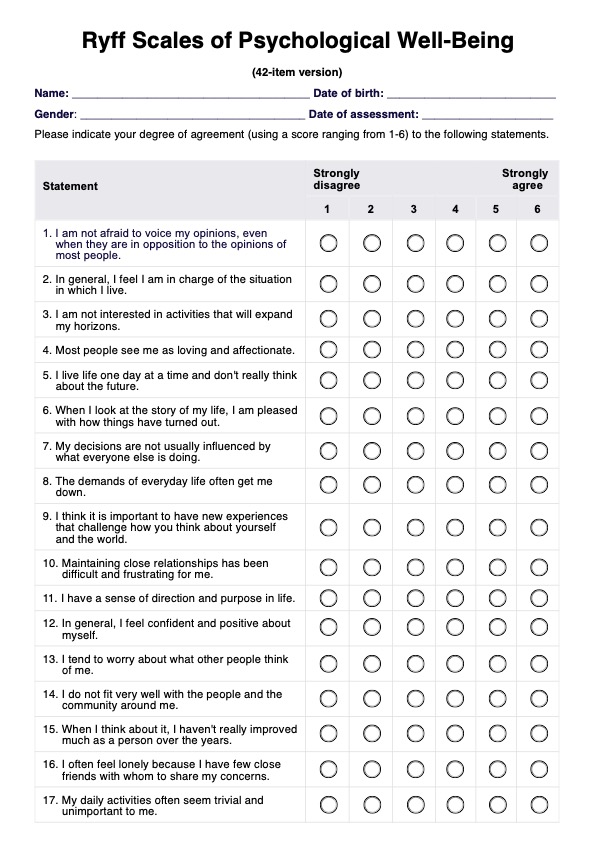
-template.jpg)




